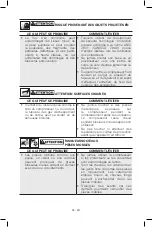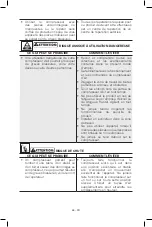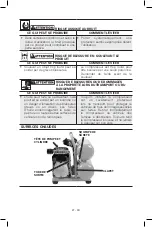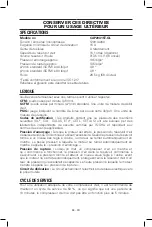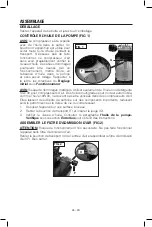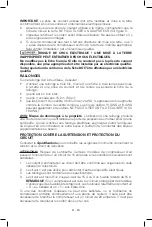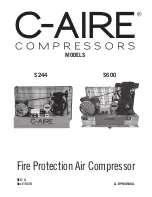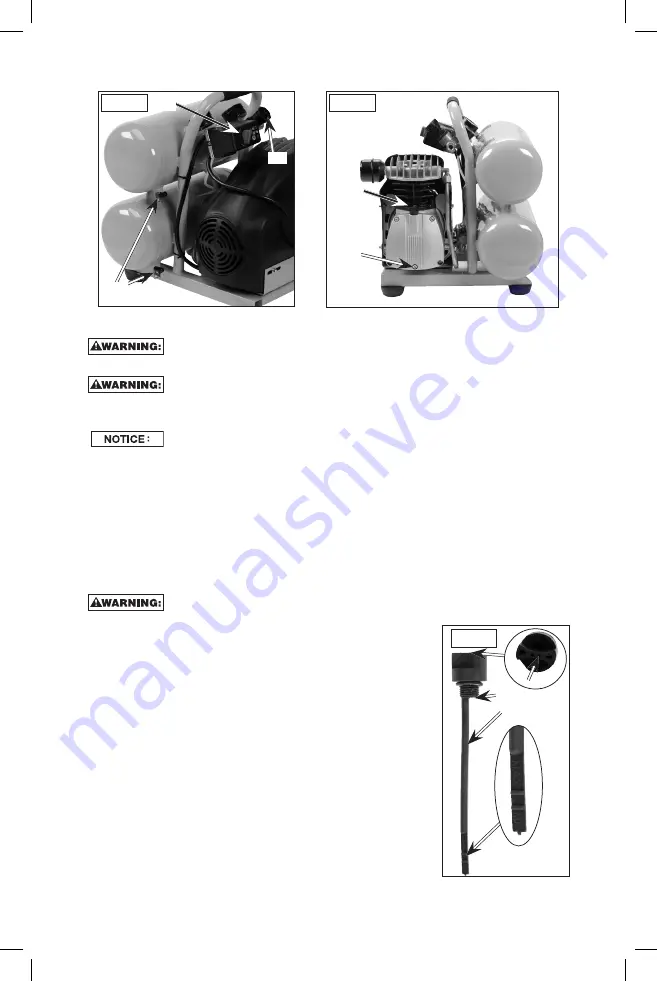
16 - ENG
FIG. 6
K
D
FIG. 7
Q
R
N
PUMP OIL (FIG. 7, 8)
Drain tank to release air pressure before removing the dipstick
or oil drain plug.
Hot surfaces. Risk of burn.
Outlet tube, pump head, and surrounding
parts are very hot, do not touch (see the
Hot Surfaces
identified in
Important
Safety Instructions
). Allow compressor to cool prior to servicing.
Risk of property damage. Use SAE 40, non-detergent air compressor
oil only. Multi-weight automotive engine oils like 10W30 should not be used in air
compressors. They leave carbon deposits on critical components, thus reducing
performance and compressor life.
NOTE:
Crankcase oil capacity is approximately 10.6 fluid ounces (313.5 mL).
CHECKING
1. Set the Auto/Off lever to "Off".
2. Place unit on a flat level surface.
3. Remove dipstick (Q) and check oil on dipstick for visual signs of contaminants
(water, dirt, etc).
Make sure air vent (V) in dipstick is free from debris. If air vent
is blocked pressure can build in crankcase causing damage to air compressor
and possible personal injury.
4. Wipe oil from dipstick.
5. Replace dipstick and allow oil to collect on dipstick.
6. Remove dipstick and check oil level on dipstick. The
MAX mark on the dipstick indicates full and MIN mark
indicates oil is needed. If oil level is below the MIN
mark, slowly add oil until it reaches the MAX (full) mark
on the dipstick.
7. Replace dipstick (Q).
CHANGING
1. Set the Auto/Off lever to "Off".
2. Allow the unit to cool.
3. Remove air compressor plug from outlet.
4. Remove the dipstick (Q).
5. Remove the oil drain plug (R) and drain oil into a
suitable container. (Tilting the compressor towards the
drain plug will assist in draining.)
FIG. 8
Q
V
V
























